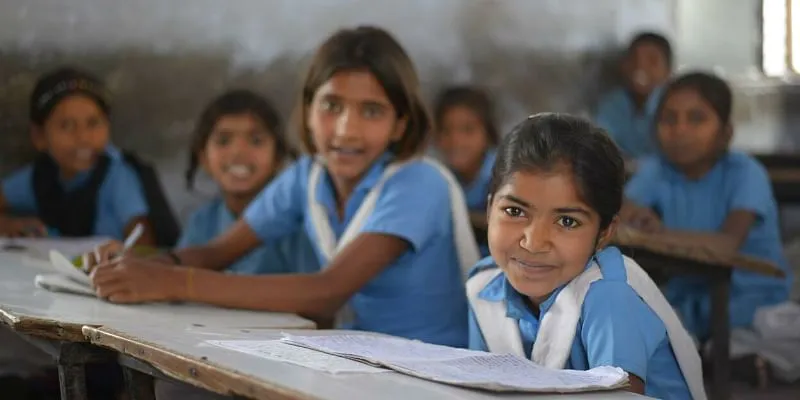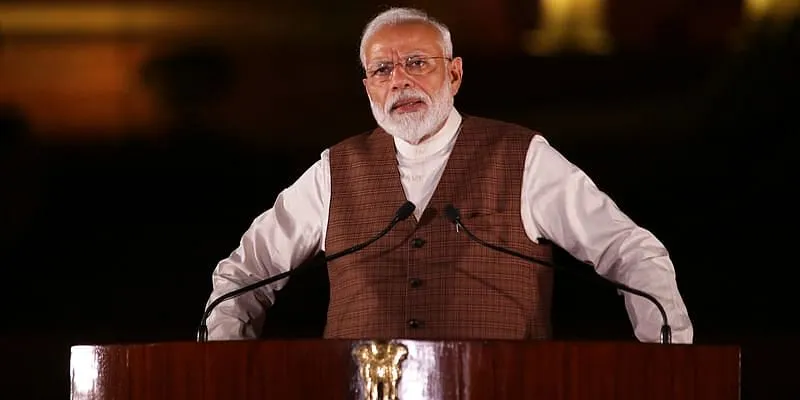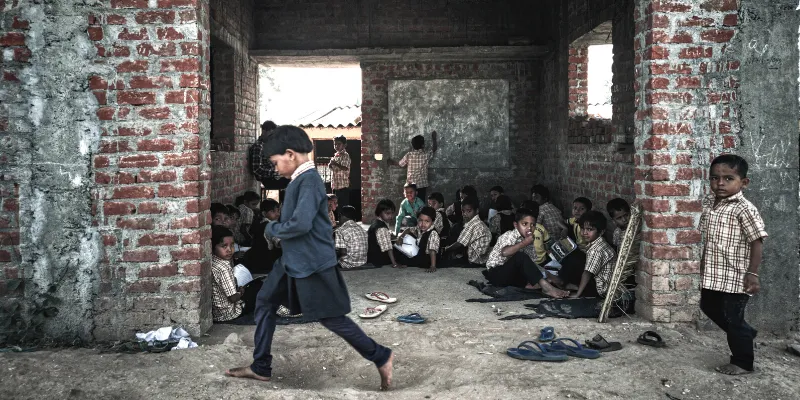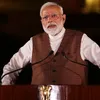A for effort: What students, teachers and academicians have to say about National Education Policy
The new National Education Policy introduced by the Union Cabinet is being seen as a revolutionary step to make India a global knowledge superpower. While many students, teachers, and academic administrators have welcomed the policy, some have registered their concerns regarding its implementation.

The NEP includes a slew of transformational reforms in the education sector. | Image Credit: Educate Girls
On July 29, 2020, the Union Cabinet presided by Prime Minister Narendra Modi, announced a new National Education Policy (NEP) for India. This policy, which is directed towards revamping learning practices both at school and higher education institutions, is a radical departure from the 34-year-old National Policy on Education formulated in 1986.
The draft of the NEP was submitted to the Union Human Resource Development Minister Ramesh Pokhriyal under the leadership of the former Chief of ISRO, Dr K Kasturirangan.
From introducing a common entrance exam for admissions, reductions in curriculums, integration of vocational education from Class VI, governance of higher education institutes (HEIs) under a single regulator, to the discontinuation of MPhil programmes, the initiative calls for several significant changes.
However, one of the most transformational reforms is that of ousting the 10+2 structure of school curriculums with a 5+3+3+4 approach. This arrangement encompasses four stages: Foundational Stage (three years of anganwadi or pre-school followed by Classes I-II), Preparatory Stage (Classes III-V), Middle Stage (Classes VI-VIII), and Secondary Stage (Classes IX-XII). Each of these legs, in turn, correspond to age groups 3-8, 8-11, 11-14, and 14-18 years respectively.
In addition to this, the adoption of mother tongue as the medium of instruction till at least Class V, practical and application-based board exams, multiple entries and exit points for courses, as well as better flexibility in choosing academic streams have been introduced as part of the new policy.
Overall, the NEP aims to advocate for a holistic, flexible and pragmatic education system, and pave the way to boost human capital development.

PM Modi addressing the audience at 'Smart India Hackathon'.
During his talk at the virtual grand finale of the ‘Smart India Hackathon’ on August 1, PM Modi said the NEP is intended to shift the focus of education from the burden of the school bag to the boon of learning.
SocialStory got in touch with students, teachers, career counsellors and other academic administrators, all of whom welcomed the move but hinted at some concerns too.
Increased focus on experiential and practical learning
Most workplaces today expect their employees to have strong cognitive abilities and stay up-to-date with the latest know-how and skills. Hence, it is crucial for schools and colleges to incorporate new and pragmatic learning techniques to help students become future-ready. Learning by doing or experiential schooling not only enables them to gain a deeper understanding of the subjects, but also enhances creativity.
The NEP attempts to integrate practical knowledge at multiple levels. The policy allows school curriculums to focus mainly on teaching core concepts, and requires vocational education to be integrated into the syllabus from Class VI. Even the focus of board exams has been realigned to test core competencies rather than have students write lengthy lessons which eventually lead to memorisation.

The policy has brought the uncovered age group of three to six years under the academic umbrella. |
Image credit: Pexel/Kavya Kodiya
Since coding is a skill that is being placed at the forefront by many companies, the National Education Policy has made it compulsory to include the subject from Class VI onwards.
Jackson Jesinth, a student who is pursuing his Bachelor's in Medical Genetics from Chettinad Academy of Research and Education, sees this as an effective measure to help the younger generation stay afloat.
“As a student pursuing medical genetics, I feel the decision to teach basic computational language at school is apt. With this effort, instead of learning programming as part of undergraduate courses, students will be able to spend more time in honing their skill and interest at an earlier stage,” he says.
A more robust undergraduate education with the option to pick and choose subjects is also inculcated. The policy envisages a comprehensive National Curricular Framework for School Education, NCFSE 2020-21, to be developed by the NCERT in line with the NEP.

When it comes to higher education, students have an option to pick and chose their subjects. | Image credit: Shutterstock
“Allowing majors and minors from different streams allows for a more well-rounded education. Besides, bringing in a standardised single entrance will be a great leveller. It will loosen the stranglehold that coaching centres have on education and thereby take the pressure off the minds of kids,” says Sarah Kurien, an education counsellor based out of Gandhinagar.
The policy also suggests a modification in the assessment methodology used to measure learning outcomes. In addition to the teachers’ evaluation, PARAKH (Performance Assessment, Review, and Analysis of Knowledge for Holistic Development) mechanism enables students to conduct self-assessment. A new National Assessment Centre will be formed to set standards and oversee the process.
When it comes to higher education, a credit-based system involving an Academic Bank of Credit (ABC) is being ushered. This system would enable the digital storage and transfer of academic credits earned from HEIs as part of the degree. In case students drop out of the course, these credits continue to hold value and can be carried forward.
“In a country like India where poverty drives increased dropout rates, granting credit for the years studied is a lovely change,” Sarah adds.
Emphasis on child development
Early childhood education forms the foundation for lifelong learning and prosperity. The NEP has recognised this and brought the uncovered age group of three to six years under the academic umbrella. The proposal consists of 12 years of schooling as well as three years of anganwadi and pre-schooling.

The policy has advocated the use of mother tongue as a medium of instruction till Class V. | Image credit: Jawahar Navodaya Vidyalayas
Richa Prashant, the Founder of Sunaayy Foundation, a Delhi-based NGO that works on empowering underprivileged children by making health and education accessible, acknowledges the recommendation.
“Early childhood care is a good step and will aid in developing the mental faculties and social skills of young minds. The parameters of judgement also seem to be impactful,” she says.
To encourage multilingualism, the government has advocated for the use of the mother tongue or regional language as the medium of instruction till at least Class V, and preferably till Class VIII. However, many academicians don’t see it as being beneficial to students.
“While it is important for a child to know their mother tongue, focusing entirely on local languages during primitive learning years can hinder their capabilities in attempting future international exams which are primarily in English. Students whose parents’ jobs require them to frequently transfer interstate will also face the repercussions of this. If a child who was been taught in Tamil suddenly moves to Gujarat and continues with the education there, things might get difficult,” notes Anitha George, Principal, Mar Athanasius International School, Kerala.
Steps towards inclusive education
According to the 2011 census, around 2.21 percent India’s population live with some form of disability. This translates to 2.68 crore out of the 121 crore populace. It has been observed that the literacy rate of persons with disabilities stands at 59 percent and is much lower than the non-disabled population of the country which is 74 percent.
To keep education accessible, the policy has favoured the standardisation of Indian Sign Language (ISL) and pushed for the development of curriculums and resource materials needed for students with hearing impairments.
The NEP mentions that children with disabilities will be capacitated to participate in the regular schooling process with the creation and help of resource centres, accommodations, assistive devices, cross-disability training for educators, appropriate technology-based tools, and other support mechanisms.

The integration of appropriate technological tools in education is imperative in today's digital era. | Image credit: Jawahar Navodaya Vidyalayas
“This is the first time the education policy is attempting to include measures to cater to the needs of children with disabilities. It is also in line with the Rights of Persons with Disabilities Act, 2016. Some of the steps if implemented in the right spirit can increase the Gross Enrolment Ratio and learning outcomes. That said, the policy remains silent about the education of adults with disabilities as well as opportunities for adolescents to pursue higher studies,” says Arman Ali, Executive Director, National Centre for Promotion of Employment for Disabled People (NCPEDP).
Extending the endeavour towards inclusion, the new policy has called for the establishment of a Gender Inclusion Fund as well as Special Education Zones for disadvantaged regions and groups.
The ongoing COVID-19 pandemic has reinforced the need for alternative modes of education and digital learning.
Drawing lessons from that, the policy aims to set up the National Educational Technology Forum (NETF), an autonomous body, to provide a platform for the free exchange of ideas on the use of technology to enhance learning, assessment, planning, and administration. The governing body is also expected to ensure the integration of technology into all levels of education by building digital infrastructure and content.
Challenges regarding implementation
Though the NEP comes across to many as a compelling effort to improve the country’s education system, individuals working in the sector believe that its benefits can be realised only after effective implementation.

A lot of people believe that the success of the policy can be realised only after its implementation.
“One of the biggest challenges I see is about the execution of the NEP. Educational institutions have to revamp completely – right from curriculums and infrastructure, to personnel development. So, the success of the policy depends on all the stakeholders involved,” says Lakshmi Murthy, Programme Head - Medical Excel, BASE Educational Services.
Heavy infrastructure, large pools of teaching faculty and extensive training are crucial to actualise the NEP and ensure that the provisions laid out are met. Though the policy recommends the central and state governments to increase expenditure on education to 6 percent of the GDP, it does not talk about how this will be achieved. This is also true concerning other areas like revamping curriculums, pedagogy methods, and e-learning.
“A lot of the changes suggested as part of the NEP are poorly thought out. They are not implementable solutions to policy challenges,” says Kritika Subramanian, a recent graduate from Lee Kuan Yew School of Public Policy, Singapore.
Edited by Kanishk Singh









